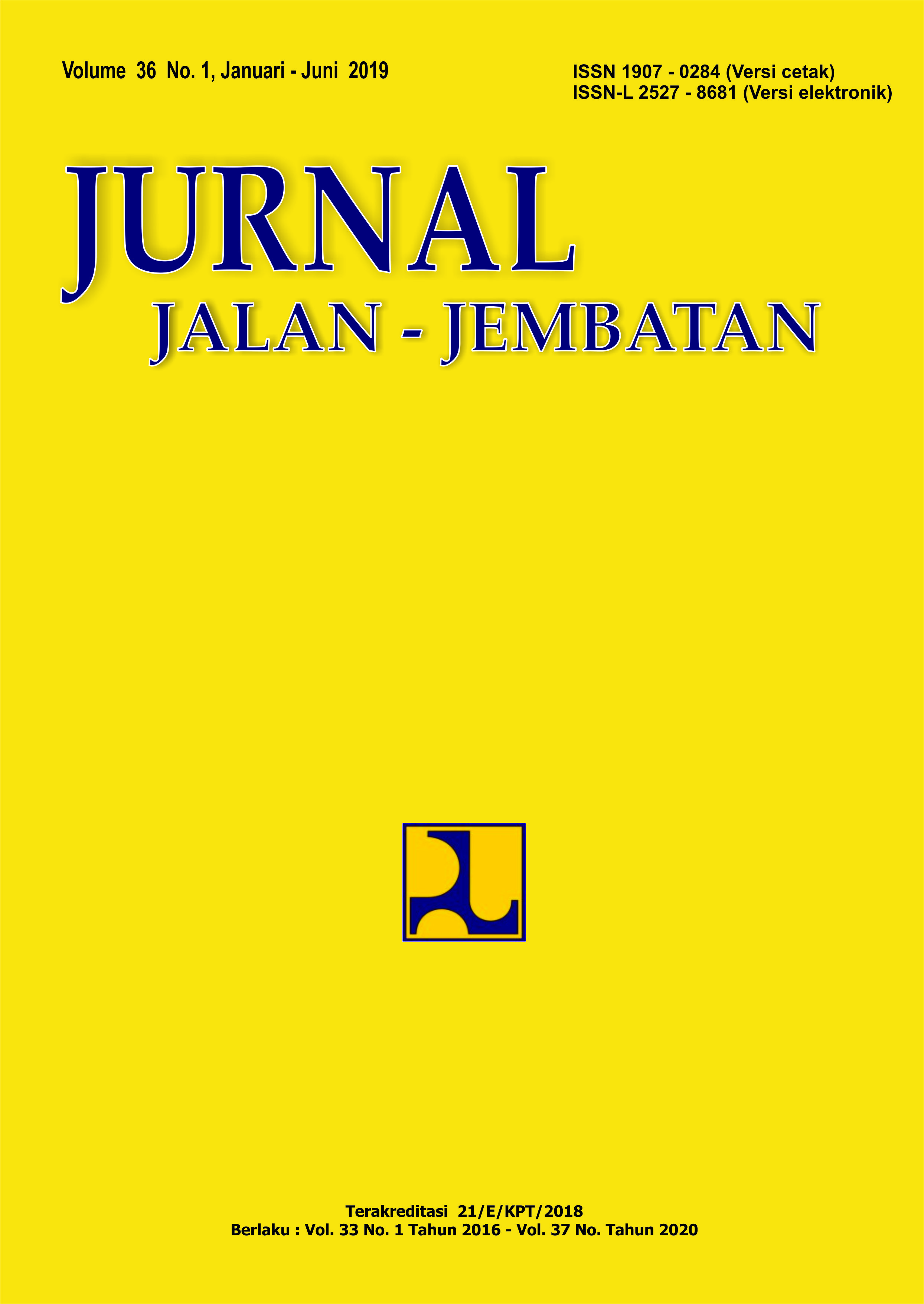(ROUGHNESS DETERIORATION MODEL FOR FLEXIBLE PAVEMENT)
Main Article Content
Abstract
ABSTRACT
In pavement management system, the roughness deterioration model is an important parameter to determine the functional performance in the future. The information of functional and structural performances will set the type of maintenance needed during the analysis period. The general model of roughness deterioration is a combination of some road deffect models such as crack, rutting, and pothole, and this seems a bit complicated. To apply this model, it needs a quite huge data and this will cause to the cost of data collection and equipment used. Because of lack of equipment and to make more efficient, it needs to adopt a simpler model of roughness deterioration. The aggregate model of roughness deterioration is a simple model used in many African countries that is a function of structural strength, environmental factor, and traffic. By adopting this model, it needs a simple calibration by comparing the results of this model to that of HDM4 program which have been applied in some countries like Ghana, Brazilia, Phillipines and Malaysia. The result shows that the roughness values of these two methods are not significantly different especially for the IRI less than 12. This means that the aggregate model of roughness deterioration is acceptable to use in Indonesia, because generally the Indonesian pavement management system suggest that the IRI of 12 will require reconstruction.
Keywords: IRI, model of roughness deterioration, pavement management system, aggregate mode of roughness deterioration, HDM
Article Details
Authors who publish in this journal agree to the following terms:
-
Authors retain copyright and grant the journal the right of first publication with the work simultaneously licensed under a Creative Commons Attribution License, which allows others to share the work with acknowledgment of the work's authorship and initial publication in this journal.
-
Authors may enter into additional contractual arrangements for the non-exclusive distribution of the journal's published version of the work (e.g., post it to an institutional repository or publish it in a book), with acknowledgment of its initial publication in this journal.
-
Authors are permitted and encouraged to post their work online (e.g., in institutional repositories or on their website) as it can lead to productive exchanges, as well as earlier and greater citation of the published work.
Each submitted manuscript must be accompanied by a "Manuscript Originality Statement" and a "Copyright Transfer Statement".

